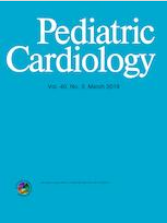 Duchenne muscular dystrophy (DMD) is the most common neuromuscular disorder in boys. It is linked to the genetically determined absence of the dystrophin, a major muscle fiber protein. DMD causes progressive motor deficit predominant in the root muscles and then spreads to the respiratory muscles and the heart, all together leading to premature death. With improved patient management, there is an increased longevity and, consequently, a higher frequency of cardiac complications. These result in left ventricular dysfunction and / or rhythm disturbances requiring, if needed, pharmacological treatment and / or a cardiac pace-maker.
Duchenne muscular dystrophy (DMD) is the most common neuromuscular disorder in boys. It is linked to the genetically determined absence of the dystrophin, a major muscle fiber protein. DMD causes progressive motor deficit predominant in the root muscles and then spreads to the respiratory muscles and the heart, all together leading to premature death. With improved patient management, there is an increased longevity and, consequently, a higher frequency of cardiac complications. These result in left ventricular dysfunction and / or rhythm disturbances requiring, if needed, pharmacological treatment and / or a cardiac pace-maker.
In an article published in March 2020, North American specialists take stock of the use of implantable defibrillator (ICD), a more sophisticated version of pace-maker, in 436 patients with DMD followed in 17 centers in the States United States and Canada. Of the 57 patients with severe heart failure, 9 received this type of device and were still alive with a 36 month follow-up. The device was life-saving in two patients (the shock produced by the ICD to reduce an attack of ventricular tachycardia) and no inappropriate shock was recorded. However, the authors point out that the diversity of pharmacological treatments combined and the retrospective nature of the study precluded drawing any more general conclusions concerning the exact place of CDI in the management of cardiomyopathy for DMD.
